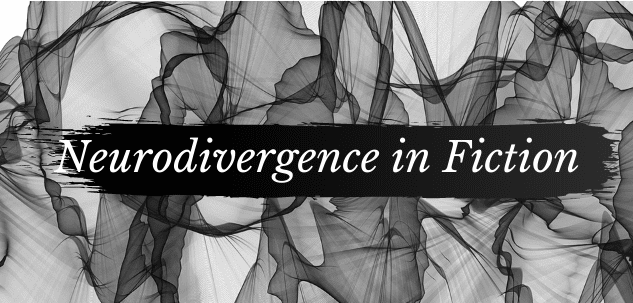
Hello all, and welcome to the first article in FanFiAddict’s series on Neurodivergence in Fiction! As a late diagnosee of Autism myself, I am so excited to be hosting this series. For so long I have felt like the “Other” and have found safety and security within the stories I read, with it often being much easier for me to relate to the character’s between the pages of a book rather than the people I interact with every day. For the next several months we will be bringing you a guest post every Wednesday from a neurodivergent author, hopefully highlighting some of the challenges that comes with writing fiction for a largely neurotypical audience, while also giving valuable insight into the craft itself and providing a window into the neurodivergent experience. At least through the lens of fiction. For today’s article we are highlighting FanFiAddict’s very own C.M. Caplan as he discusses The Myth of Accurate Representation.
Without further ado, let’s get to the article.
It’s been said before that while nonfiction pertains to facts, fiction is about truth.
Fiction is, according to this metric, a means of accessing and interrogating concepts that breach the bounds of mere discussion. It is a way to get at something so true to the lived experience of the author that it cannot even be written about directly. The concept of truth in fiction revolves around the idea that truth is such an overwhelming force that it must be approached at a slant.
This is a beautiful, poetic, near-spiritual metaphor.
And it is wrong.
The truth does not get sold. It cannot be confined by capital.
There is a difficulty, especially among marginalized communities, with how best to approach the idea of accuracy. Often, the desire to write your truth comes into conflict with writing something that the people who do not share your marginalization will believe.
This is especially apparent when writing neurodivergent characters, and I believe the tension between “writing accurate, honest neurodivergency” and “writing something that works within the bounds of the neurotypical conception of narrative structure” is in large part why neurodivergency is lacking in a lot of fiction.
Most people who are not mentally disabled don’t know, and can’t know, what it’s like to be mentally disabled. This would be fine enough reason to make a POV character mentally disabled—to put a neurotypical person into my headspace. It’s an admirable goal. But how do writers do this when neurotypical people have been fed watered-down or outright inaccurate versions of who you are and how you function? When the truth of what it’s like to be mentally disabled is so distorted by the dominant culture’s view of you, writing something that is totally and completely true will feel, to neurotypicals, like lying.
One need look no further than their television screen for proof of this. The success of a show like Monk proves that most people are only willing to see a specific, and extremely rare, version of OCD—it is a disorder that almost never has anything to do with cleanliness or neatness. And yet it’s the only framework through which most people perceive it and believe that it exists.
How do you write a character with OCD—as a writer with OCD—and make him feel true to the people who are uninterested in knowing who and how you are? How do you make them seem normal when the very fact of your existence is believed by many neurotypical people—and even many mentally ill people—as a punishment?
How does an author with OCD write accurate representation of what it’s like to experience intrusive thoughts? How do they even go about explaining them? In the context of fiction, where it is often thought that every word must be essential, and every thought must be a reflection of the character—how do you go about writing intrusive thoughts in a format in which most readers would assume such have any meaning beyond this is what people like me deal with?
For the uninitiated, intrusive thoughts are ego dystonic—meaning that people would never have them if they weren’t shocked upset and disturbed by them. The reason the mind snags on them is because they are shocking and upsetting, and thus effort must be put in to block them out and make them unobtrusive. This is where the “compel”part of the disorder comes in. The outward behaviors displayed are an attempt to exert control over these thoughts.
I often need to block out thoughts of self-harm. But that’s not because I want to hurt myself. I could turn inward and shine a spotlight on these thoughts all day and never feel the slightest urge to act on them. Because they are, and always have been, on some level, too ridiculous to take seriously. They’re like a horror movie in your head, and you’d never want the horror movie to happen to you. It just squats in the back of your mind, bothering you. The way neurotypical people sometimes remember something they did in High School, and cringe at it. Or think of an upsetting scene in a movie, unbidden. But these thoughts are more fantastical, more constant, more upsetting.
You know that little voice that comes into your head when you’re standing on a ledge? The tiny voice that says “What if you jumped? That’d be wild.” Imagine if you couldn’t turn that voice off at any point throughout the day, forever. And instead of telling you to jump, it was creating complex scenarios out of a Saw movie specifically because you would not want to do that.
All this to say, most readers would find the inclusion of this aspect to a character quite unnecessary. Any inclusion of OCD would necessarily include graphic content like this. It would be difficult to honestly write a character even grabbing a kitchen knife without having to evade intrusive thoughts about gruesome things that could be done with it. It would not even need to linger in the narrative, as often these thoughts just skirt by, half-noticed.
But this is content that would turn off readers who don’t understand the way intrusive thoughts work. It would prime readers to wait for the moment that character actually did turn a kitchen knife on themselves or others. Because a character’s thoughts are meant to be a reflection of real desires.
Hell, even the writing of them could cause them to be more prevalent to the author—it could give the thoughts a weight in the forefront of their mind that it would not otherwise have.
People who do not experience these thoughts would likely assume there is something wrong with such a character. That there is something that which needs to be fixed. Most people would likely feel unsatisfied knowing a character would still be having these thoughts by the end of the book. Because often readers who don’t have OCD like to think people only have these experiences if we’d like to act on it—or if we’ve done something deserve them. It ties into the just-world fallacy and relies on punitive logic. Nobody could experience this as a baseline without deserving it on some level—or so many believe.
And when those are the people who are reading your book, it can be very easy to decide you’d rather not include the more unpleasant details or your disability—or better yet, not to include it altogether.
If you never have to include it, you never have to deal with the compromises and sacrifices of the self that come with writing and selling stories to a largely neurotypical audience. It is a path that’s far less painful, and deeply understandable. And I’d never begrudge anyone for following it. If you do choose to write about your identity, you do not owe the world mere slivers of yourself.
It is entirely understandable to come to the conclusion that the only way to win is not to play. To not have to deal with all the misinformation and misunderstandings that come with having a disability. With correcting assumptions or dealing with neurotypical people assuming your portrayal is inaccurate or harmful because the symptoms you write about are not as clean is they would like. The assumptions that writing honestly is underestimating yourself. Or that your portrayal is inaccurate because it did not fulfill someone’s desire for pity porn, or its inspirational antithesis.
Writing honestly about mental disability and neurodivergence is difficult, because to most readers, it isn’t as palatable. Because it isn’t as pitiable.
And this goes far beyond just OCD. Almost any disability you can think of will and does have effects that are unpleasant. Affects that, in fiction, are often perceived as a punishment for previous wrongs. And if your tolerance for neurodivergent characters and neurodivergent stories end when the symptoms of that neurodivergence get too ugly, then you do not want to read about our characters, you’d like us to be your plot devices. If the only stories the neurotypical reader cares about are the ones that reinforce their current view of the neurodivergent, then the reader is not truly interested in escaping their bubble, and learning from difference.
The mechanisms of the narrative have set roles for neurodivergent characters. Hundreds of years of disability-as-punishment in fiction have reinforced this idea as a sort of default. Add to this the wealth of villains whose motives are lazily excused by whatever neurodivergency is trending, and most readers will assume this as a reflection of that disorder. These fault lines in our narratives have been baked in, centuries deep.
The only way to undo defaults in stories is to have enough authors who know better to provide a counternarrative.
The only way you change the perceptions of others who do not care to know you is to give them a wealth of new narratives about who you are.
And that is an especially sticky subject, when it comes to neurodivergent and mentally disabled writers. Because publishing is not built with accommodations in mind.
Publishing is thoroughly on the side of the neurotypical reader. That needs to change if we are to believe the industry when they say our stories matter.
And that’s a subject we’ll be discussing in future posts.
About the Author

C.M. Caplan is the author of The Sword in the Street. He’s a quadruplet (yes, really), mentally disabled, and he spent two years as the Senior Fiction Editor on a national magazine – while he was still an undergrad in college.
He has a degree in creative writing from Salem State University and was the recipient of the university’s highest honor in the arts. His short fiction also won an Honorable Mention in the 2019 Writers of the Future Contest.
Caplan’s introduction to fantasy came through J. R. R. Tolkien and George R. R. Martin. He has a tattoo that roughly translates to Valar Morghulis, as written in Tolkien’s Elvish script, in an acknowledgment of that fact. Other influences include Robin Hobb, Ellen Kushner, N.K. Jemisin, Katherine Addison, John Irving, Ann Petry, K.S. Villoso, and Neil Gaiman.
He currently lives in New England, where he works remotely for a social justice theater company.
Order The Sword in the Street here. Or, add it to your Goodreads shelf here.
Follow C.M.’s exploits on Twitter – @thecmcaplan. Or, see his reviews on FanFiAddict here.




I often think about how our disabilities are often marketed and catered to masses. How masses only consume it when they can pity it. Even as a neurodivergent person, worry about instinctively being adverse to narrative constructions that are born out of neurodivergence. Fantastic piece, Caplan. Looking forward to more!
He really hit it out of the park, didn’t he? I couldn’t be more happier with how the launch of this series turned out.
It’s incredible.
Wow this was a really good post. I see K.S. Villoso talk about some of the same issues as it relates to race and culture and having to work within a western worldview and western expectations of other cultures. Making some of the same (amd other) points about neurodivergence was really thought provoking. Looking forward to reading the rest of the posts you have lined up.
Yeah, I think a lot of the issues run very parallel when you’re looking at representation for marginalized or just underrepresented peoples. We want representation, but even good representation is either undervalued or written off as somehow unauthentic. It’s tough.
But, I’m so very glad that you found the article insightful! Connor will be back at some point in the series and we have a ton of other authors lined up to contribute, including Ada Hoffman, who contributed an article for this week’s post.